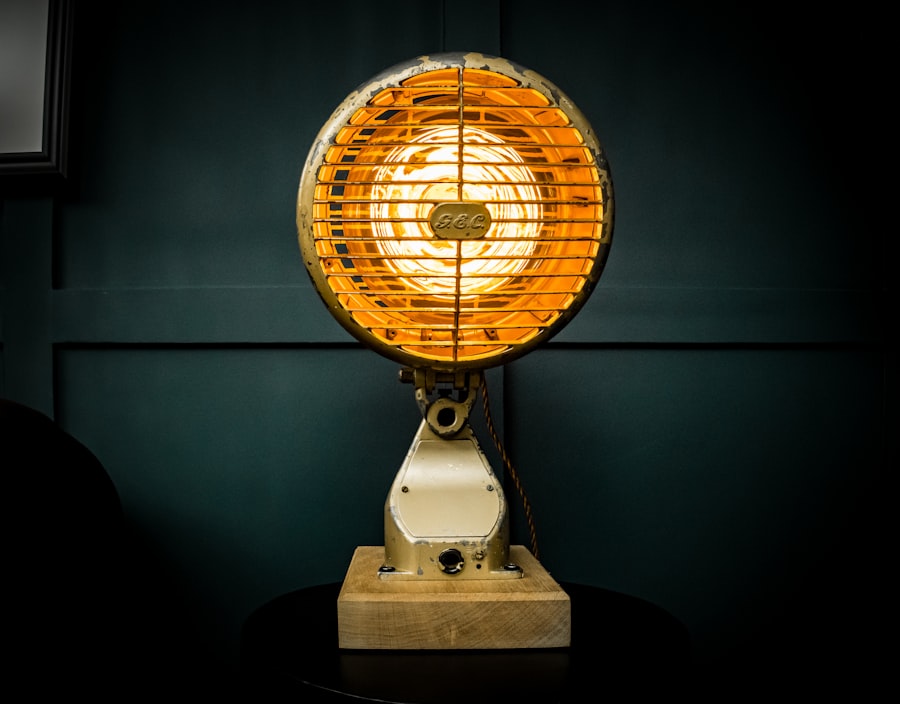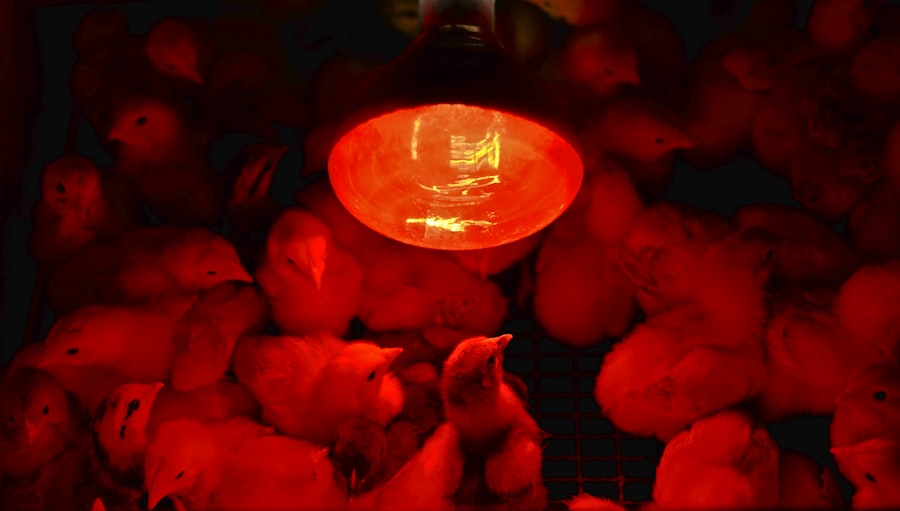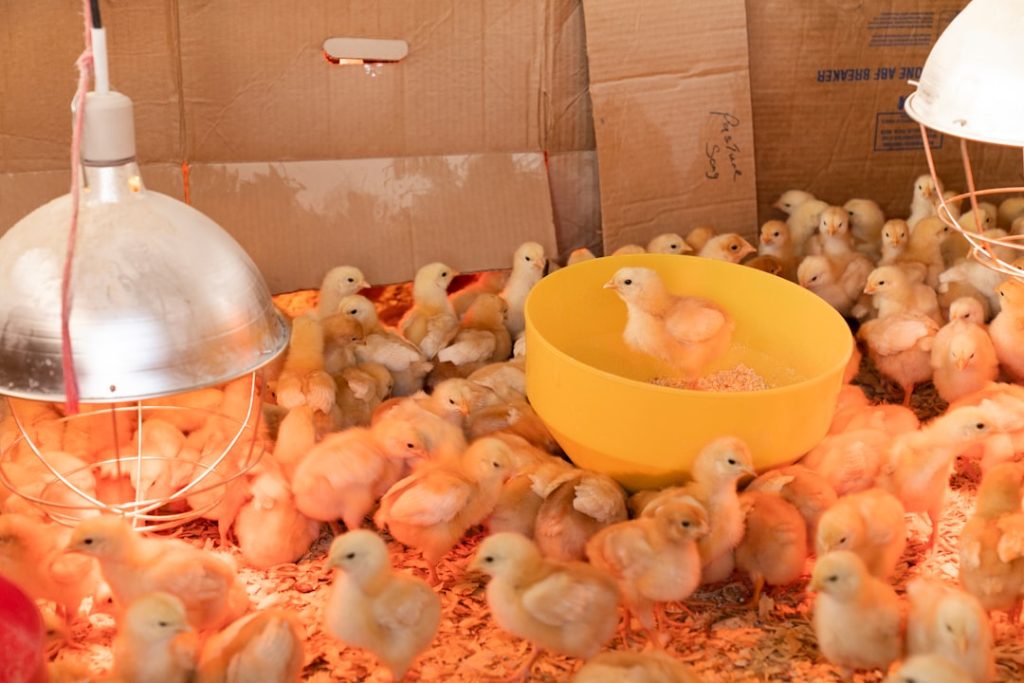When raising baby chickens, it is essential to understand their specific requirements to ensure optimal care. Chicks, as baby chickens are called, need a warm and comfortable environment to thrive. In the first few weeks of life, they are unable to regulate their body temperature effectively, making it crucial to provide an appropriate heat source and closely monitor their surroundings.
Proper ventilation and bedding are also necessary to maintain warmth and promote health. By addressing these needs, caretakers can help ensure the development of healthy adult birds. Baby chickens are sensitive creatures that require specialized care during their early stages of life.
They cannot generate sufficient body heat to maintain their temperature, relying instead on external heat sources. It is important to create an environment that simulates the warmth provided by a mother hen. Furthermore, chicks require constant access to food and water to support their growth and development.
Understanding and meeting these specific needs allows caretakers to create a nurturing environment that promotes the health and well-being of baby chickens.
Table of Contents
- 1 Providing a suitable heat source
- 2 Creating a warm and cozy environment
- 3 Monitoring temperature and adjusting as needed
- 4 Ensuring proper ventilation
- 5 Using bedding to help retain heat
- 6 Taking precautions during power outages
- 7 FAQs
- 7.1 What is the ideal temperature for baby chickens?
- 7.2 How can I keep baby chickens warm?
- 7.3 What should I use as a heat source for baby chickens?
- 7.4 How do I know if baby chickens are too cold or too hot?
- 7.5 Are there any alternative methods to keep baby chickens warm?
- 7.6 When can baby chickens be moved to a cooler environment?
Key Takeaways
- Baby chickens need a warm and cozy environment to thrive
- Providing a suitable heat source is crucial for the well-being of baby chickens
- Monitoring temperature and adjusting as needed is important for their health
- Proper ventilation is essential to ensure a healthy environment for baby chickens
- Using bedding can help retain heat and create a comfortable space for baby chickens
Providing a suitable heat source
Why Heat is Crucial for Baby Chickens
In the first few weeks of life, baby chickens are unable to regulate their body temperature effectively, making it crucial to provide them with a consistent source of warmth. A heat lamp or brooder is commonly used to provide the necessary warmth for baby chickens.
Creating a Temperature Gradient
The heat source should be placed at one end of the brooder to create a temperature gradient, allowing the chicks to move closer or farther away from the heat as needed. It’s important to monitor the temperature regularly and adjust the height of the heat source to maintain the ideal temperature for the chicks.
Distributing Heat Evenly and Safely
In addition to providing a suitable heat source, it’s important to ensure that the heat is distributed evenly throughout the brooder. This can be achieved by using a heat lamp with a wide coverage area or by using multiple heat sources in larger brooders. It’s also important to consider the type of heat source being used, as some may pose a fire hazard if not used properly. By providing a suitable heat source and ensuring that it is distributed evenly, you can create a warm and comfortable environment for your baby chickens to thrive.
Creating a warm and cozy environment

Creating a warm and cozy environment is essential for the health and well-being of baby chickens. In addition to providing a suitable heat source, it’s important to consider other factors that contribute to a comfortable environment for the chicks. This includes using appropriate bedding material to retain heat, providing adequate ventilation, and ensuring that the brooder is free from drafts and cold spots.
By creating a warm and cozy environment, you can help your baby chickens grow and develop properly. Bedding material plays a crucial role in creating a warm and cozy environment for baby chickens. It helps retain heat and provides a soft surface for the chicks to rest on.
Common bedding materials include pine shavings, straw, or paper towels. It’s important to regularly clean and replace the bedding to maintain a clean and hygienic environment for the chicks. Additionally, proper ventilation is essential for maintaining air quality and preventing the buildup of harmful gases such as ammonia.
By creating a warm and cozy environment with suitable bedding and proper ventilation, you can ensure that your baby chickens have the best possible start in life.
Monitoring temperature and adjusting as needed
Monitoring the temperature of the brooder is crucial for the health and well-being of baby chickens. It’s important to use a reliable thermometer to measure the temperature regularly and make adjustments as needed. The ideal temperature for baby chickens varies depending on their age, but it generally ranges from 90-95°F in the first week and decreases by 5°F each week until they are fully feathered.
By monitoring the temperature closely and making adjustments as needed, you can ensure that your baby chickens are kept warm and comfortable at all times. In addition to monitoring the overall temperature of the brooder, it’s important to observe the behavior of the baby chickens. If they are huddled together directly under the heat source, they may be too cold, whereas if they are avoiding the heat source altogether, they may be too hot.
By paying attention to their behavior and making adjustments accordingly, you can ensure that the temperature is just right for your baby chickens. It’s also important to have a backup plan in case of power outages or equipment failures, such as using alternative heat sources or relocating the chicks to a warmer area temporarily.
Ensuring proper ventilation
Proper ventilation is essential for maintaining air quality and preventing the buildup of harmful gases in the brooder. It’s important to ensure that there is adequate airflow without creating drafts that could chill the baby chickens. This can be achieved by using a brooder with adjustable vents or by periodically opening windows or doors to allow fresh air to circulate.
It’s also important to regularly clean and replace bedding material to prevent the buildup of ammonia, which can be harmful to the respiratory health of the chicks. By ensuring proper ventilation, you can create a healthy environment for your baby chickens to thrive. In addition to maintaining air quality, proper ventilation helps regulate humidity levels in the brooder.
High humidity levels can lead to damp bedding and promote the growth of harmful bacteria, while low humidity levels can cause dehydration in the baby chickens. It’s important to monitor humidity levels regularly and make adjustments as needed by using a hygrometer or simply observing condensation levels in the brooder. By ensuring proper ventilation and regulating humidity levels, you can create an optimal environment for your baby chickens to grow and develop.
Using bedding to help retain heat

Retaining Heat and Creating a Cozy Environment
Bedding material plays a vital role in retaining heat in the brooder and creating a warm and cozy environment for baby chickens. The ideal bedding material should be soft, absorbent, and provide good insulation against cold surfaces. Common bedding materials include pine shavings, straw, or paper towels.
Maintaining Cleanliness and Hygiene
It’s essential to regularly clean and replace the bedding to maintain a clean and hygienic environment for the chicks. Using deep bedding can also help retain heat by providing an extra layer of insulation for the baby chickens. In addition to providing insulation, bedding material also provides a soft surface for the baby chickens to rest on.
Preventing Leg Problems
This is especially important for preventing leg problems such as spraddle leg, which can occur if the chicks are kept on hard or slippery surfaces. By using suitable bedding material and maintaining proper cleanliness, you can help retain heat and create a comfortable environment for your baby chickens.
Taking precautions during power outages
Power outages can pose a serious threat to the health and well-being of baby chickens, as they rely on an external heat source to maintain their body temperature. It’s important to have a backup plan in place in case of power outages or equipment failures. This may include having alternative heat sources such as hot water bottles or hand warmers on hand, as well as having a plan for relocating the chicks to a warmer area temporarily if necessary.
It’s also important to have a backup power source such as a generator or battery-powered heat lamp in case of prolonged power outages. Additionally, it’s crucial to monitor the temperature closely during power outages and make adjustments as needed to ensure that the baby chickens are kept warm and comfortable. By taking precautions during power outages and having a backup plan in place, you can ensure that your baby chickens are protected from potential harm caused by loss of heat.
If you’re looking for tips on how to keep baby chickens warm, you might also be interested in learning about what vegetables quails eat. Check out this article to discover the best vegetables to feed your quails for optimal health and nutrition.
FAQs
What is the ideal temperature for baby chickens?
The ideal temperature for baby chickens is around 95 degrees Fahrenheit for the first week of their life. The temperature can then be reduced by 5 degrees each week until they are fully feathered.
How can I keep baby chickens warm?
You can keep baby chickens warm by using a heat lamp or a brooder. Make sure to provide a warm, draft-free environment for the chicks.
What should I use as a heat source for baby chickens?
A heat lamp with a red or infrared bulb is commonly used to provide warmth for baby chickens. Make sure to hang the heat lamp at a safe distance from the chicks to prevent overheating or fires.
How do I know if baby chickens are too cold or too hot?
If baby chickens are huddled together under the heat source, they may be too cold. If they are panting, spreading out, or avoiding the heat source, they may be too hot. Adjust the heat source accordingly.
Are there any alternative methods to keep baby chickens warm?
Some alternative methods to keep baby chickens warm include using a heating pad designed for chicks, a radiant heat brooder, or a heat plate. These options provide a more natural heat source for the chicks.
When can baby chickens be moved to a cooler environment?
Baby chickens can be moved to a cooler environment once they are fully feathered, usually around 6-8 weeks of age. Make sure to gradually acclimate them to the cooler temperatures.
Meet Walter, the feathered-friend fanatic of Florida! Nestled in the sunshine state, Walter struts through life with his feathered companions, clucking his way to happiness. With a coop that’s fancier than a five-star hotel, he’s the Don Juan of the chicken world. When he’s not teaching his hens to do the cha-cha, you’ll find him in a heated debate with his prized rooster, Sir Clucks-a-Lot. Walter’s poultry passion is no yolk; he’s the sunny-side-up guy you never knew you needed in your flock of friends!







